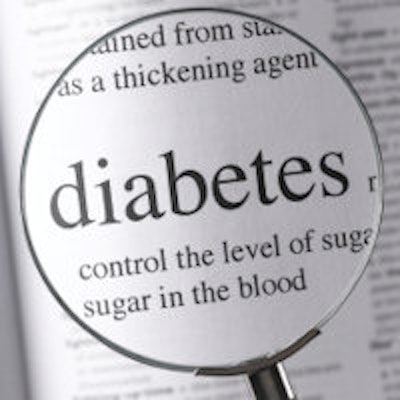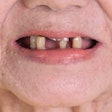
Educating adolescent patients with diabetes about oral hygiene can go a long way toward improving their overall health, according to a study presented at the recent International Association for Dental Research (IADR) meeting in Seattle.
The researchers found that less than half of the adolescents with type 1 diabetes in their study strongly agreed that taking care of their gums is as important as taking care of their medical health.
The subanalysis of people enrolled in a study of the epidemiology of cardiovascular risk factors in adolescents with type 1 diabetes was conducted by Anne Wilson, DDS, MS, of the Children's Hospital Colorado and an associate professor of pediatric dentistry at the University of Colorado School of Dental Medicine, and Elaine Morrato, DrPH, MPH, an associate professor at the Colorado School of Public Health. They analyzed responses from 182 subjects to a 40-item oral health questionnaire. The youths first completed the questionnaire and then underwent a dental evaluation.
The 120 young people with diabetes and 62 without diabetes had an average age of 15 years and were equally split between boys and girls; 80% were non-Hispanic whites. Their average body mass index Z score -- a measure of relative weight adjusted for each child's age and sex -- was 0.44, indicating their average weight was very close to average for their age group. Furthermore, 73% were late- or postpubertal.
Of the total group, 84% had dental insurance, and 80% had a dental checkup in the previous six months and 55% had previous orthodontic treatment.
The survey results also revealed that the subjects who did not have diabetes had brushed their teeth an average of 11.6 times in the previous week, compared with an average of 9.7 times among the children with diabetes (p = 0.008). They had flossed an average of 3.1 and 2.3 times, respectively, in the previous week (p = 0.17).
Adolescents with or without diabetes both had bleeding on probing at more than half of their teeth. However, the percentages of teeth and sites/subject that bled on probing increased in a stepwise fashion with hemoglobin A1c levels, rising from 40% among those with normal levels (< 7.5%), to 56% among those with early-stage diabetes (7.5% to 9.5%), and to 70% with severe diabetes (>9 .5%, p < 0.001). The investigators noted this is consistent with increased risk for vascular complications from suboptimal glucose control.
Furthermore, the average periodontal pocket depth was 2.02 mm in the diabetes group, compared with 1.93 in the nondiabetes group (p = 0.01). The average clinical attachment loss was 0.73 mm and 0.62 mm, respectively (p = 0.005).
In contrast to their somewhat lax brushing and flossing habits, 43% of the adoloscents with diabetes indicated they knew diabetes confers an increased risk of periodontal disease. Just 8% in the nondiabetes group were aware of this fact. But -- perhaps indicating why they are keen flossers -- only 44% of those with diabetes agreed that taking care of their gums is as important as taking care of their medical health.
This is a red flag in an era when more and more evidence links diabetes and periodontal disease, Dr. Wilson noted. The relationship is probably bidirectional, she suggested, with individuals with diabetes possibly experiencing an exacerbated systemic response to periodontal pathogens and pro-inflammatory cytokines associated with chronic periodontitis increasing insulin resistance and contributing to poor glycemic control.
"Therefore, as dental practitioners, we have an opportunity to contribute in a meaningful way to health promotion for children and adolescents with diabetes through early disease detection, vigilant dental maintenance, monitoring of blood glucose levels, nutritional counseling, and ongoing collaboration with medical providers for the optimal health of patients," said Dr. Wilson, who presented the findings at the IADR meeting.


















